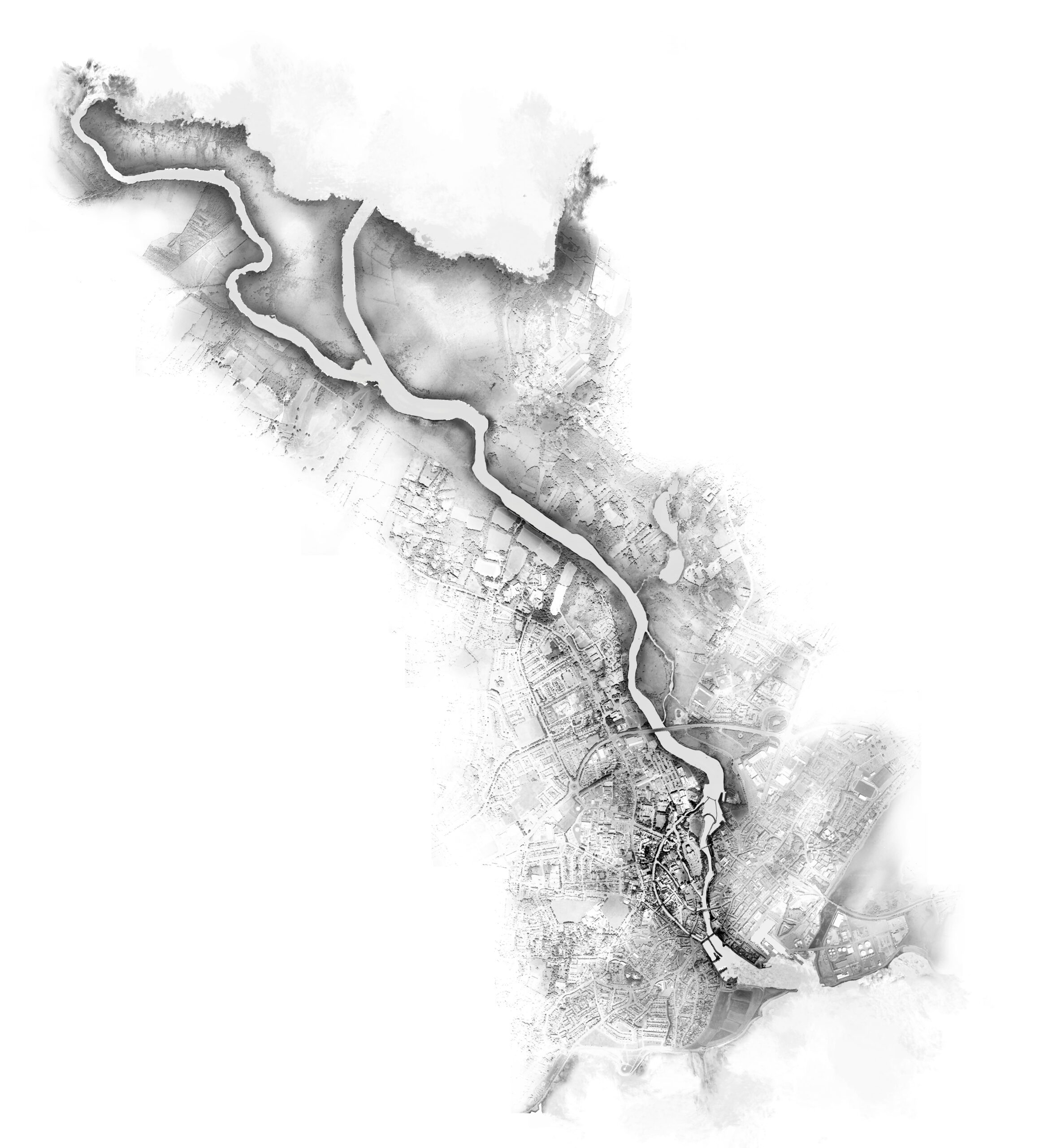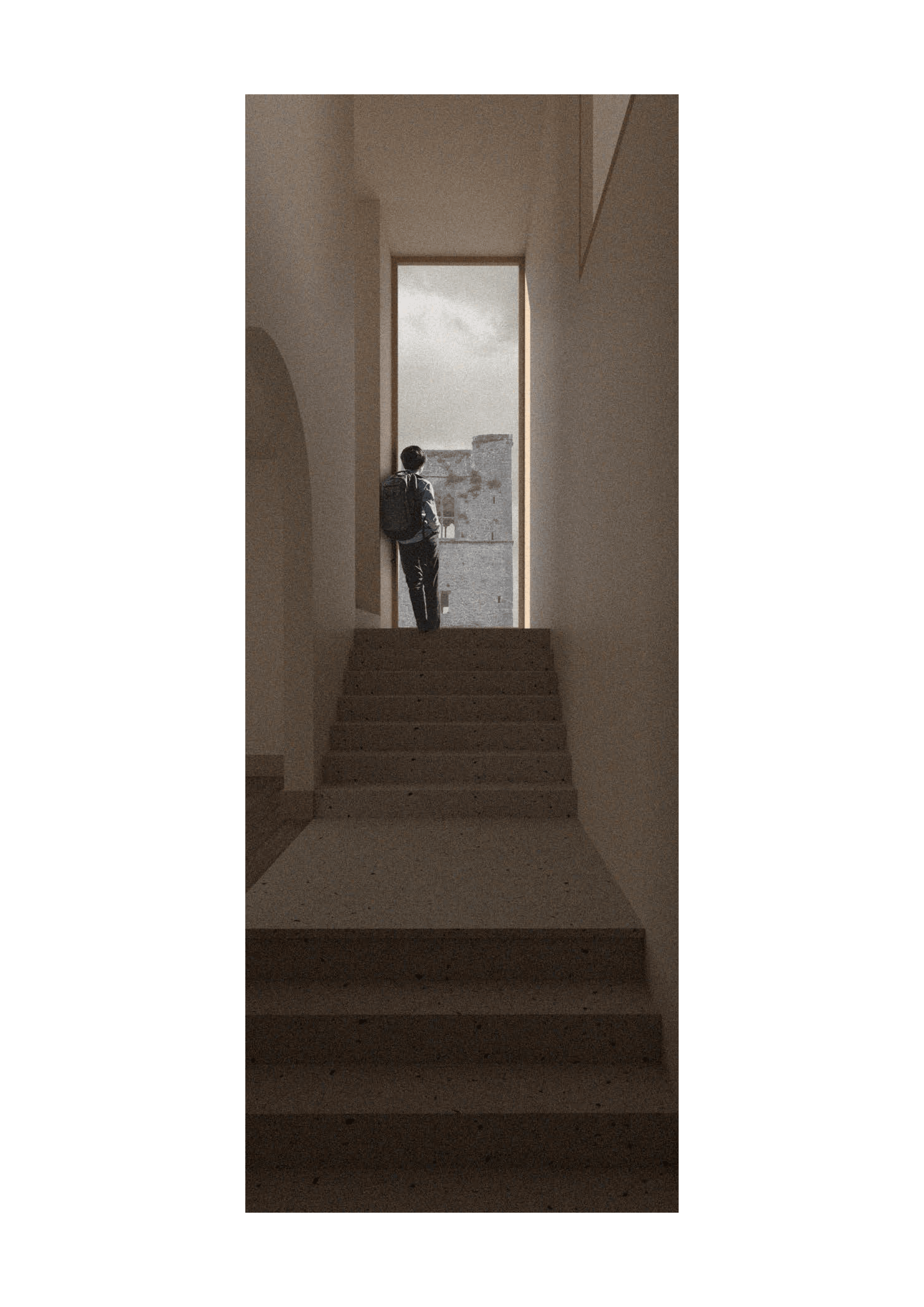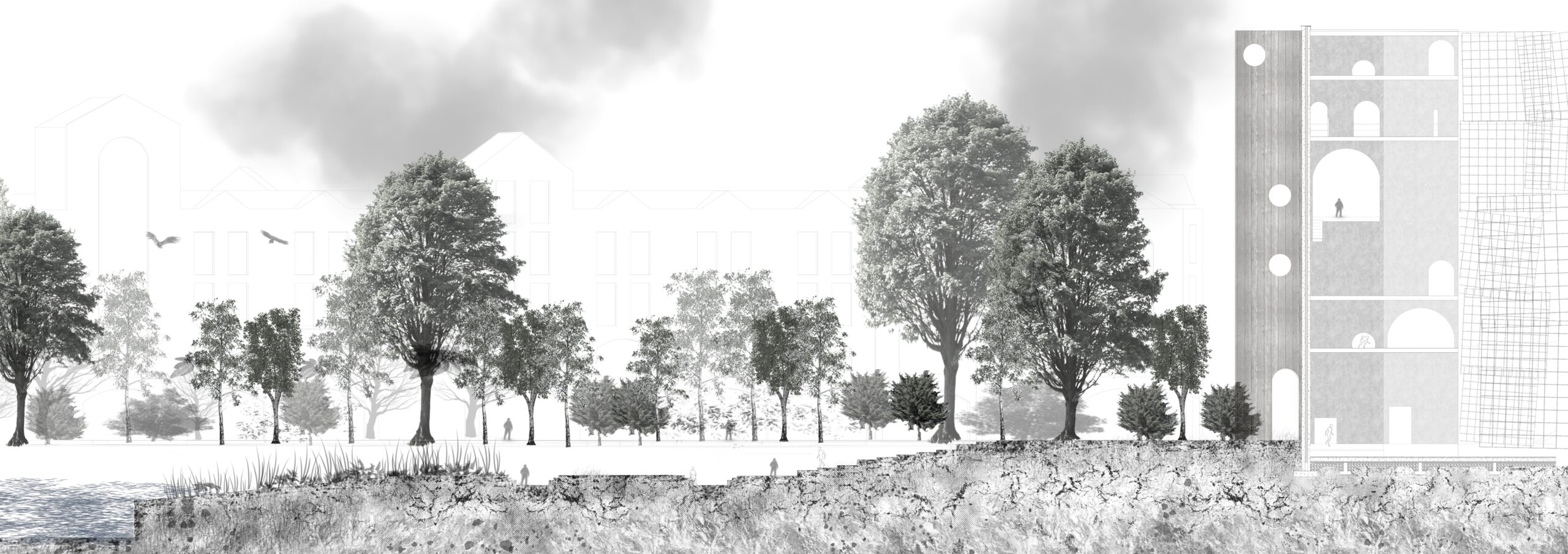The project explores the relationship between humankind and rivers: how humans perceive rivers and the two-way interactions that occur. It views rivers from a selection of perspectives such as the river as a life source, a transport route and a power source.
The site is the River Corrib and the surrounding land of Galway city. The design project will focus on Madeira Island, now a surface car park. The River Corrib once powered Galway city’s industry and trade but now has a much less prominent role in the city. The fact that the city is built on a massing of islands, shaped by a network of waterways, is no longer evident due to the orientation of public buildings and main routeways.
Education has long been an integral part of Galway city life. The city centre currently hosts a university, three secondary and primary schools. However, all three secondary schools are in the process of migrating outwards in search of larger grounds in the suburbs.
The aim of the project is to provoke public re-evaluation of the river and to re-orientate people towards it. The programme is a music school to strengthen the weakening educational framework of Galway’s city centre


